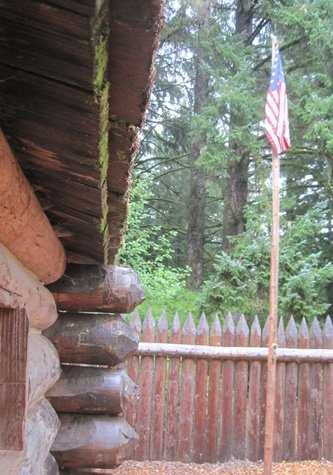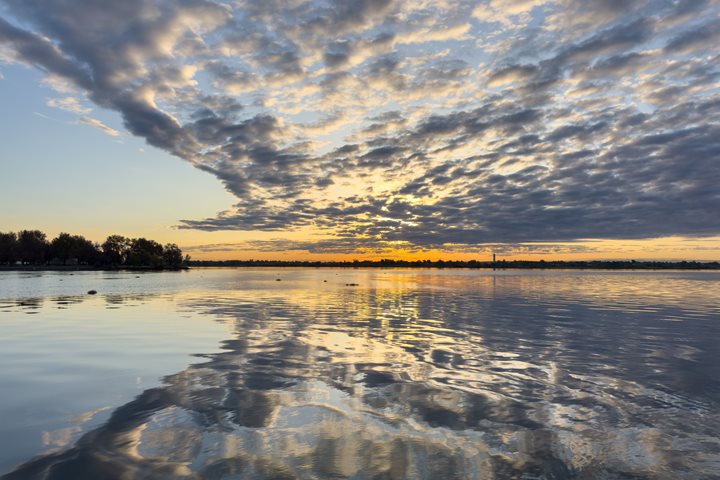Early risers greeted the day with a view across the mighty Columbia River Bar, that awesome graveyard of ships which guards the storm-tossed entrance to the mighty river of the West. As the day unfolded, we were reminded time and again of other guardians who have left their mark on this conflicted land on the far shore of America.
At Fort Clatsop, we recalled this log palisade represents the first military post of the United States on the West Coast, founded in 1805 by those two intrepid army officers Meriwether Lewis and William Clark. The fort conforms to standard military design, providing not only shelter but also a defensive perimeter. During our mid-morning visit to the Maritime Museum in Astoria, we saw the early charts and maps of rival imperial powers who laid claim to this region in the late 18th and early 19th centuries. Also on display in the museum is a remarkable relic from a British warship which seized this American-founded fur-trading outpost of Astoria during the War of 1812.
The afternoon presented us with a variety of options. Under clearing skies and patches of blue, some of us chose to go kayaking or cruising in an expedition craft through the Lewis and Clark National Wildlife Refuge. Others continued our pursuit of the Corps of Discovery by exploring the northern shore of the Columbia. We stopped at Station Camp where the corpsmen took shelter and trekked out to the headland known as Cape Disappointment. As we made our own way to the Cape, we recalled that the mouth of Columbia was fortified during the American Civil War with three artillery bases bristling with guns to defend the river against any incursions by hostile Confederates. The Lewis and Clark Interpretive Center, which offered us spectacular views out to open sea beyond the Columbia Bar, is perched atop one of the old concrete-enclosed batteries of the United States Army Coast Artillery, a crumbling ruin once armed with six-inch guns with a range of 8.2 miles.
The strength of these defenses was tested during the early days of World War II when a Japanese submarine surfaced off the mouth of the Columbia in June 1942 and fired nine shells from its deck gun (nearly hitting a family of nearby sleeping campers!). Regarded as the first foreign attack on mainland U.S. soil since the War of 1812, the site is marked today by a Pacific Rim Peace Memorial dedicated by American and Japanese representatives. Inscribed on the monument are these hopeful words, “May Peace between our Nations be Everlasting.”







